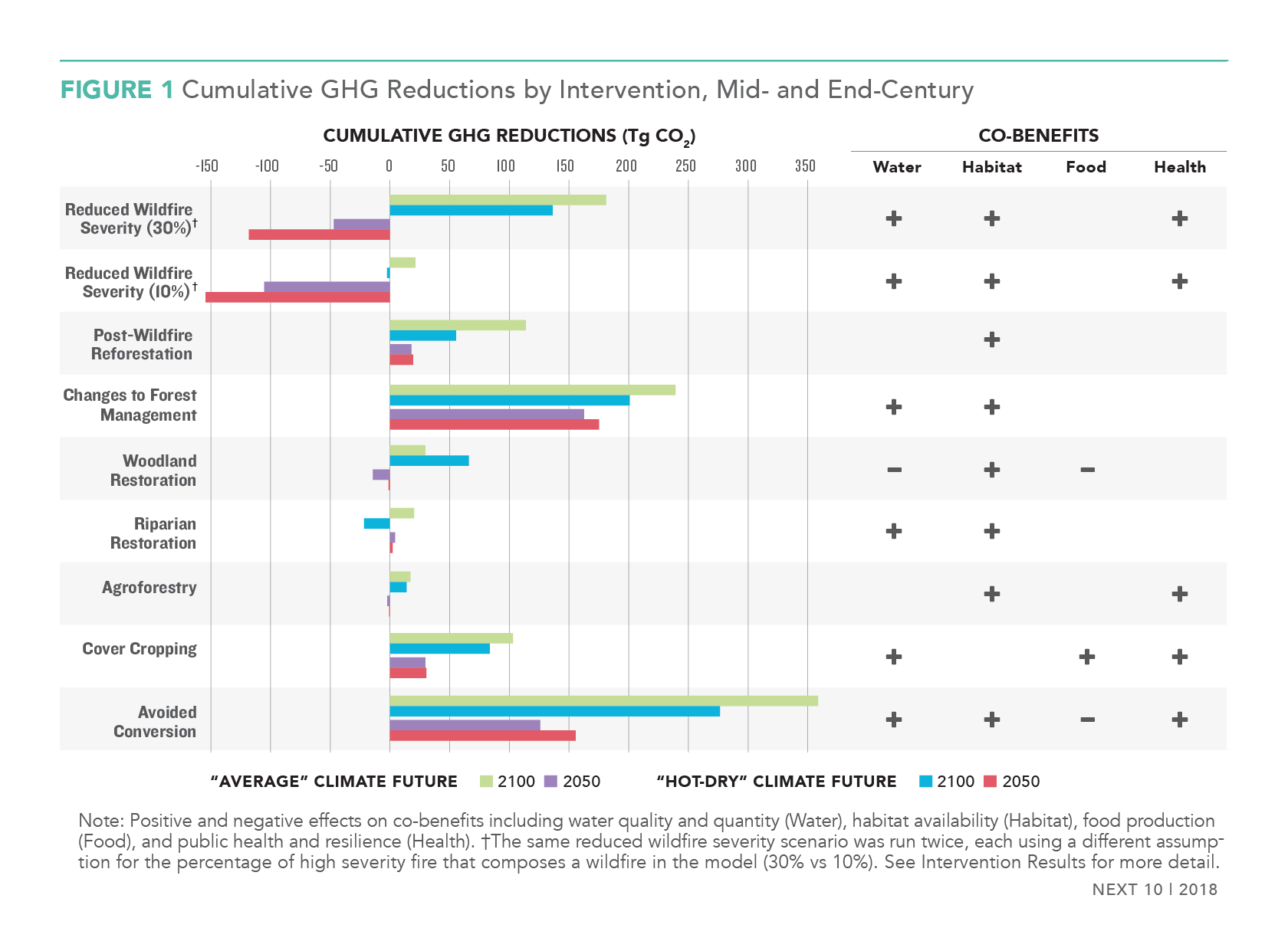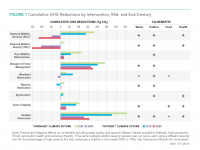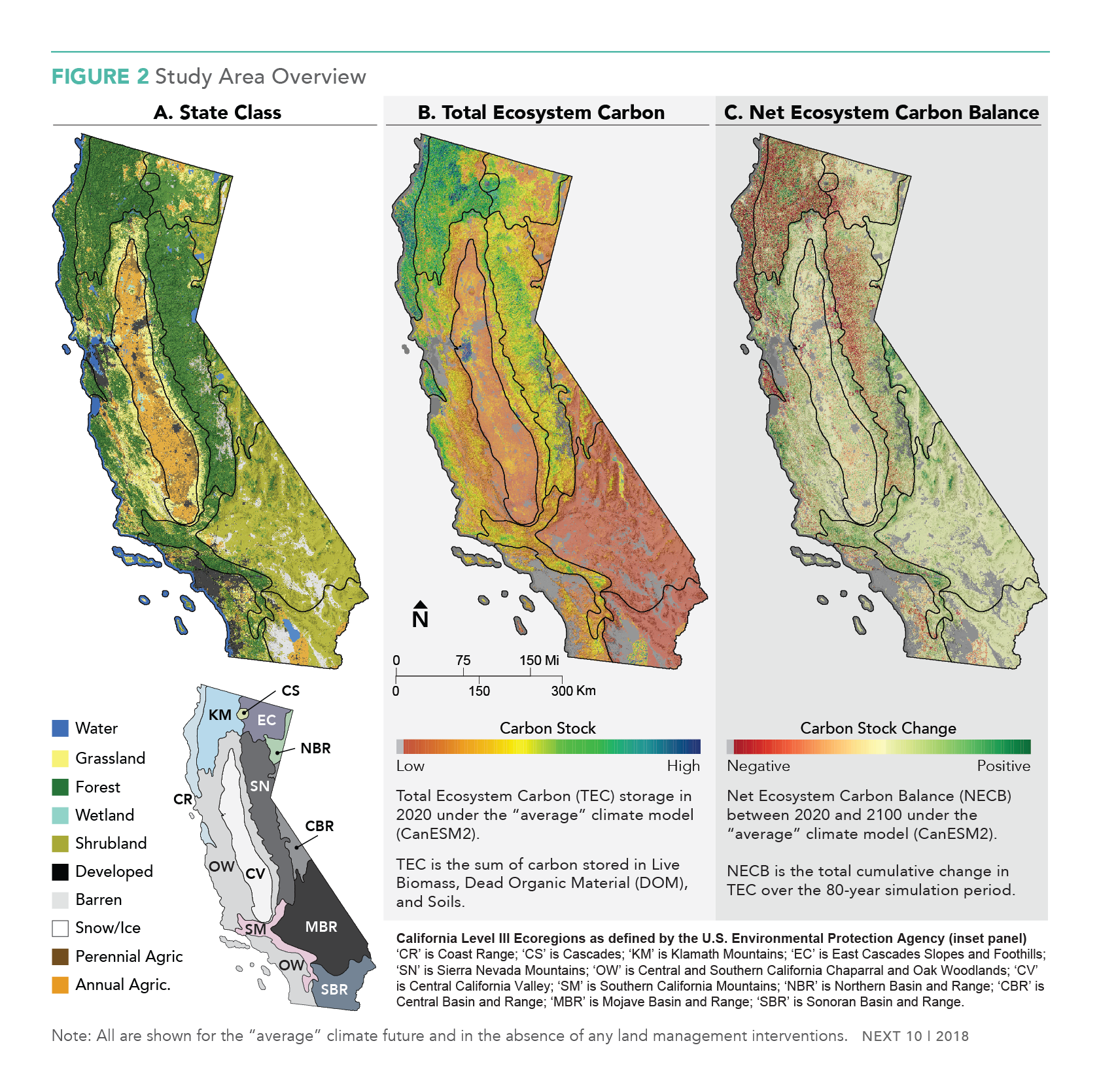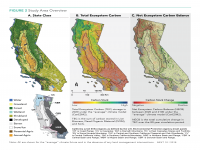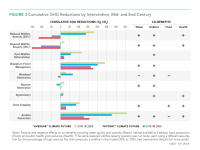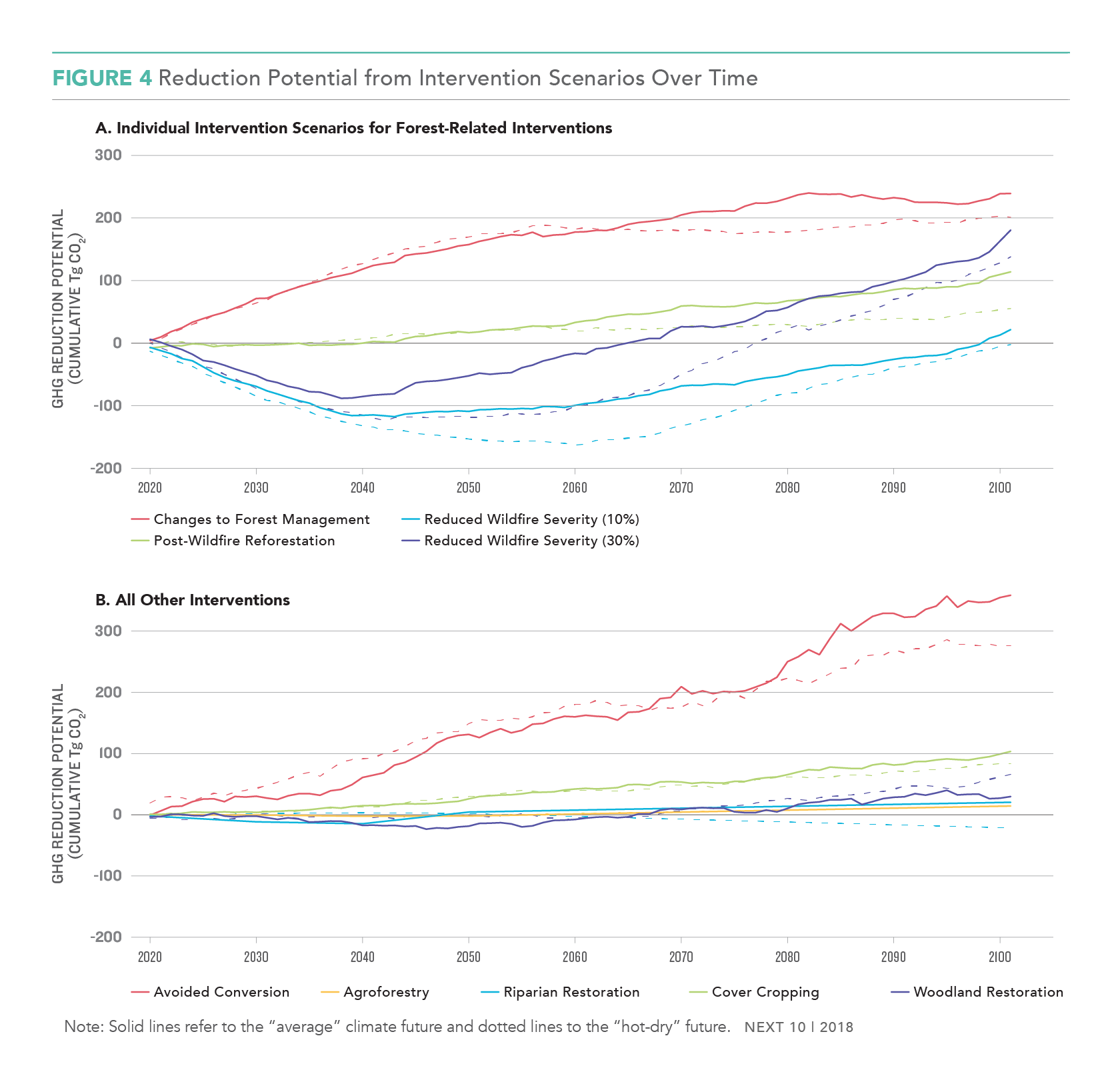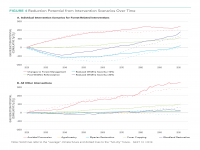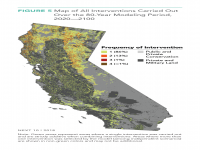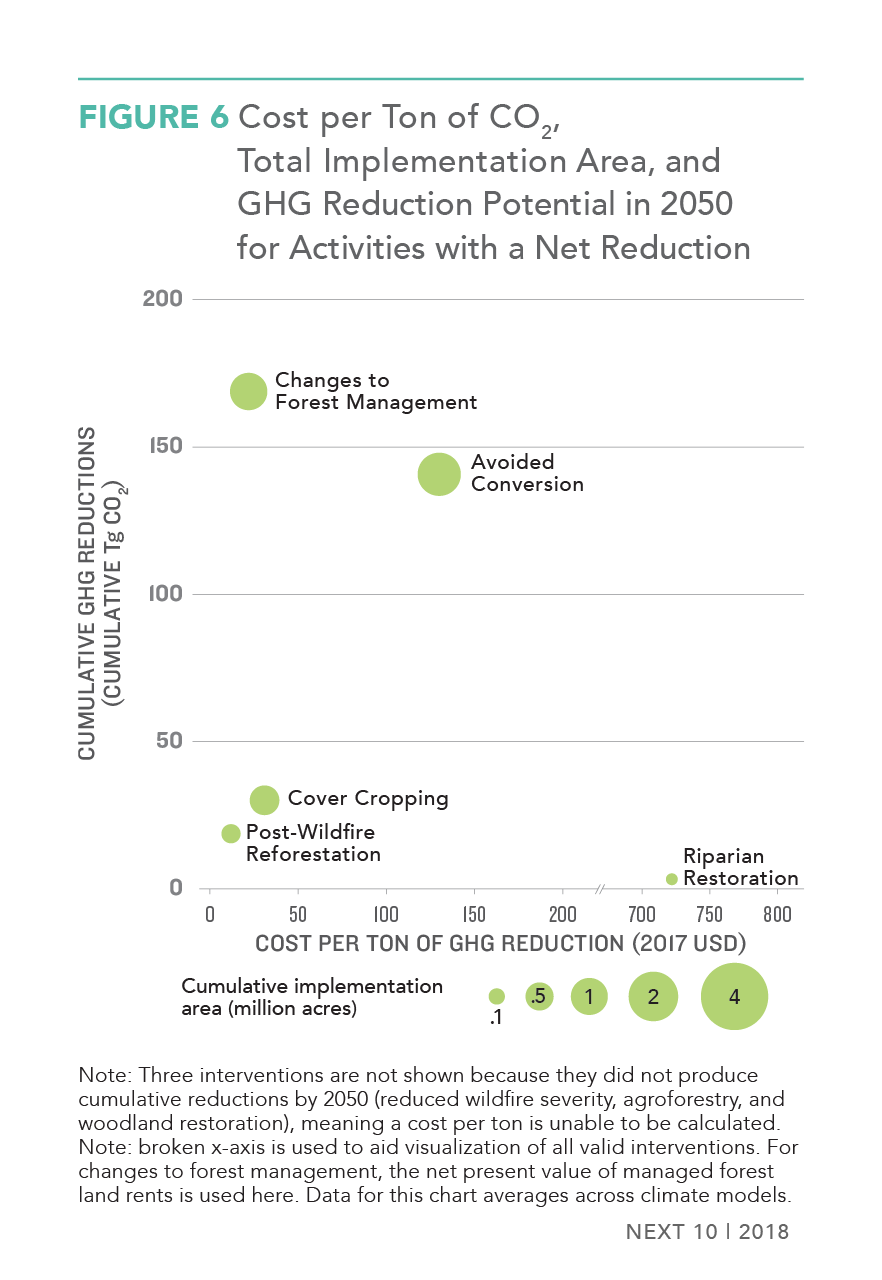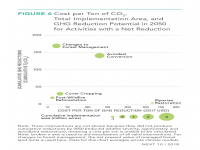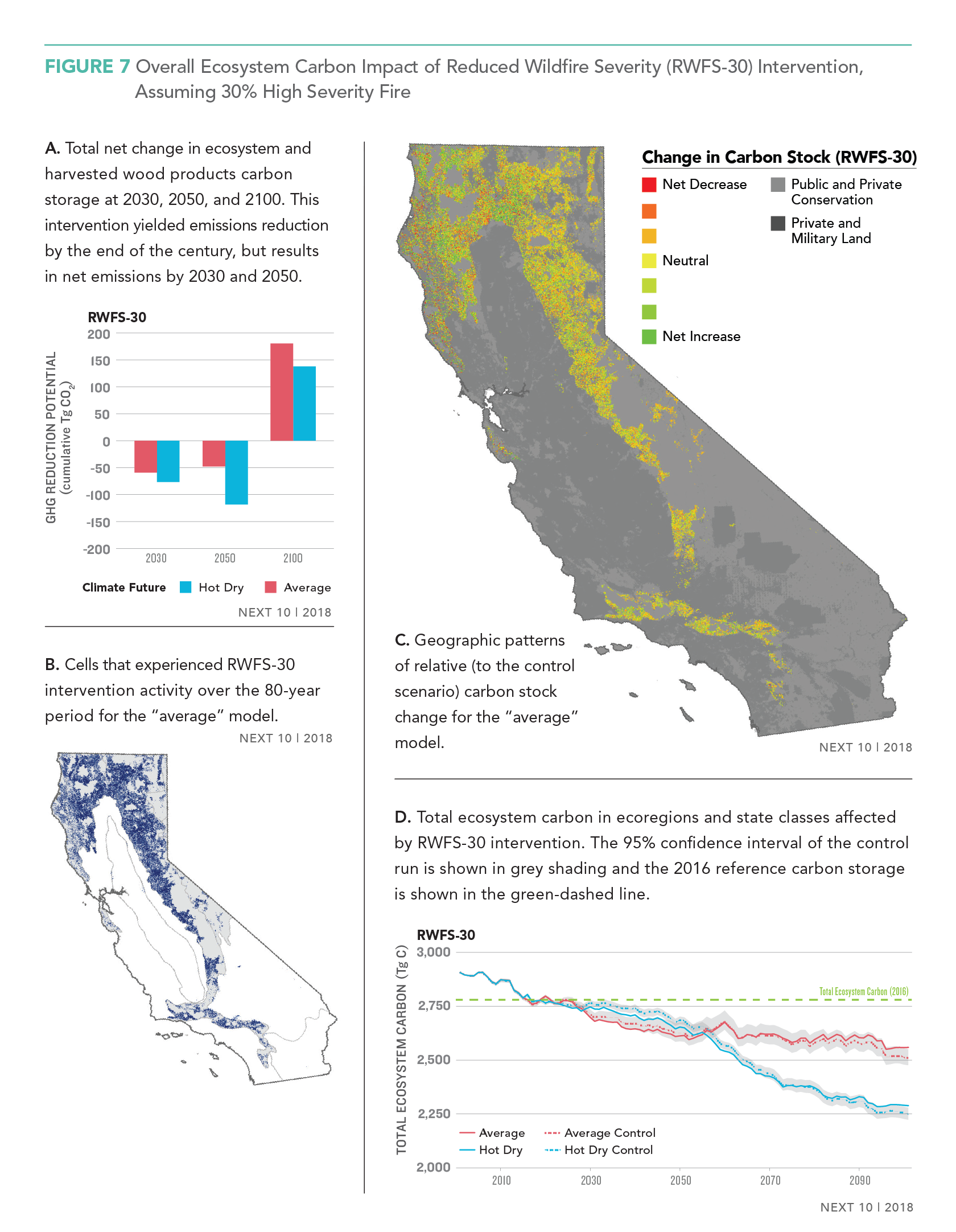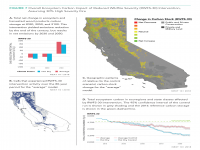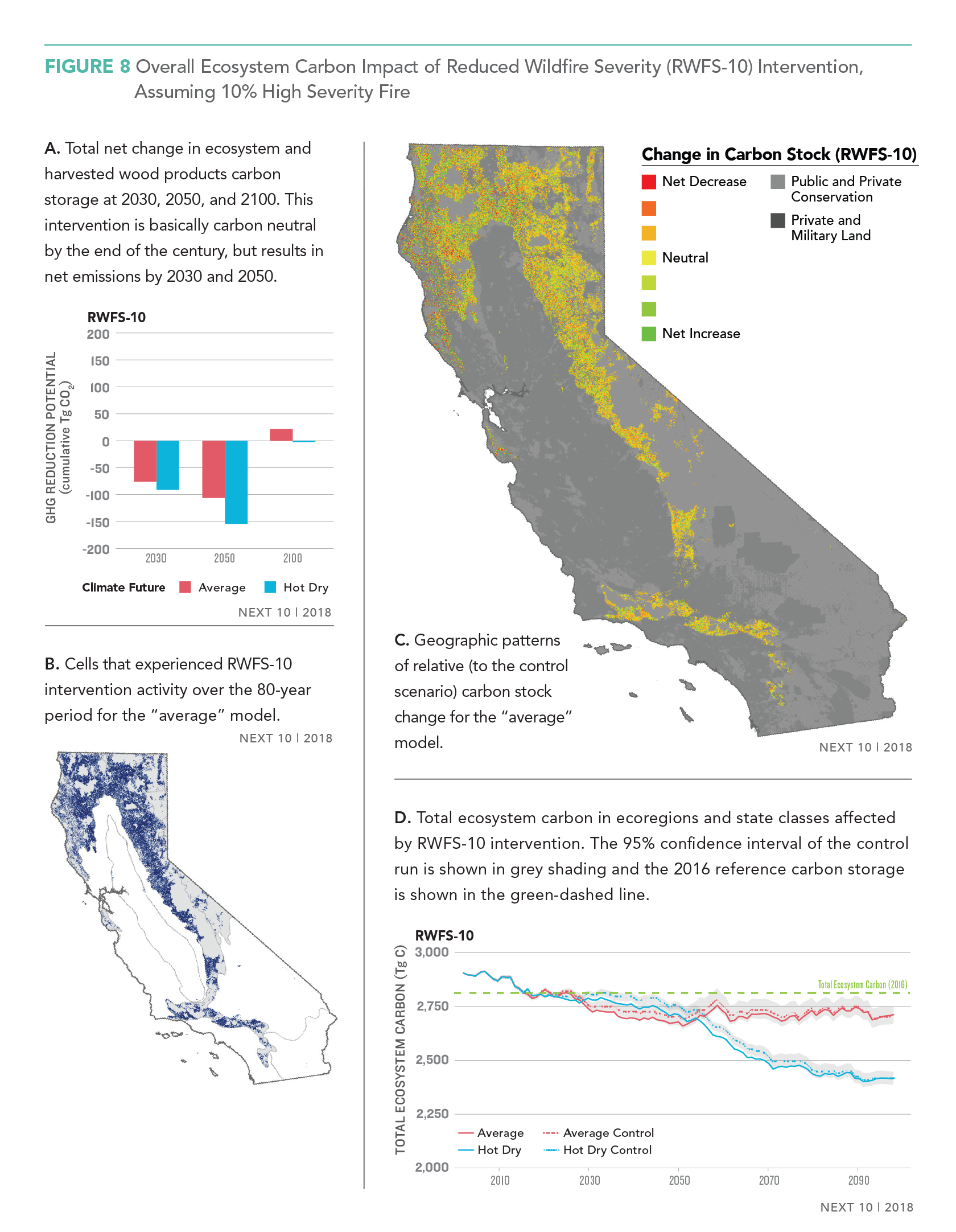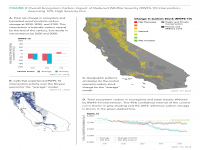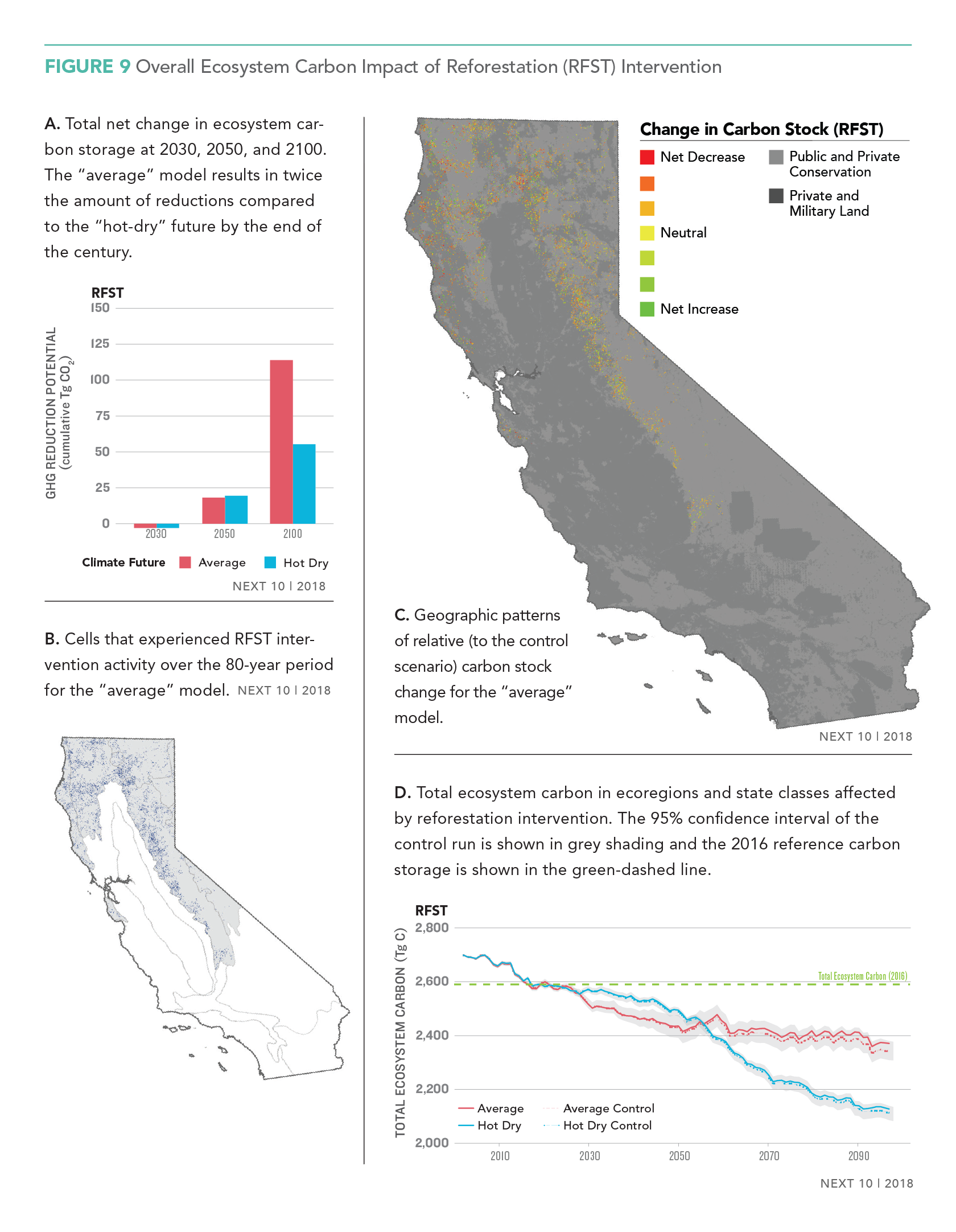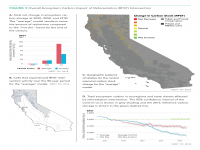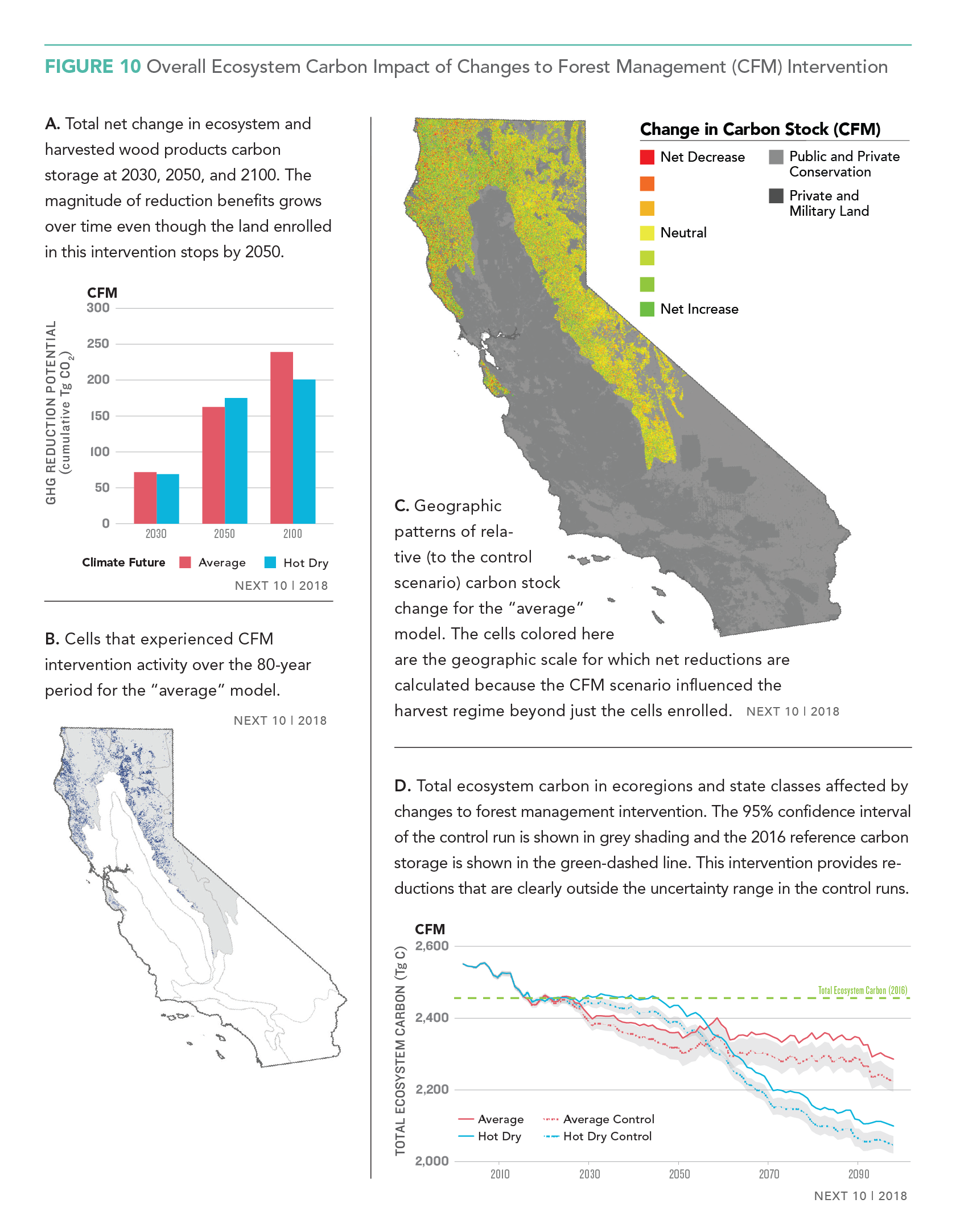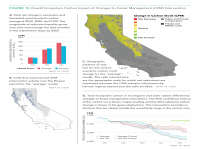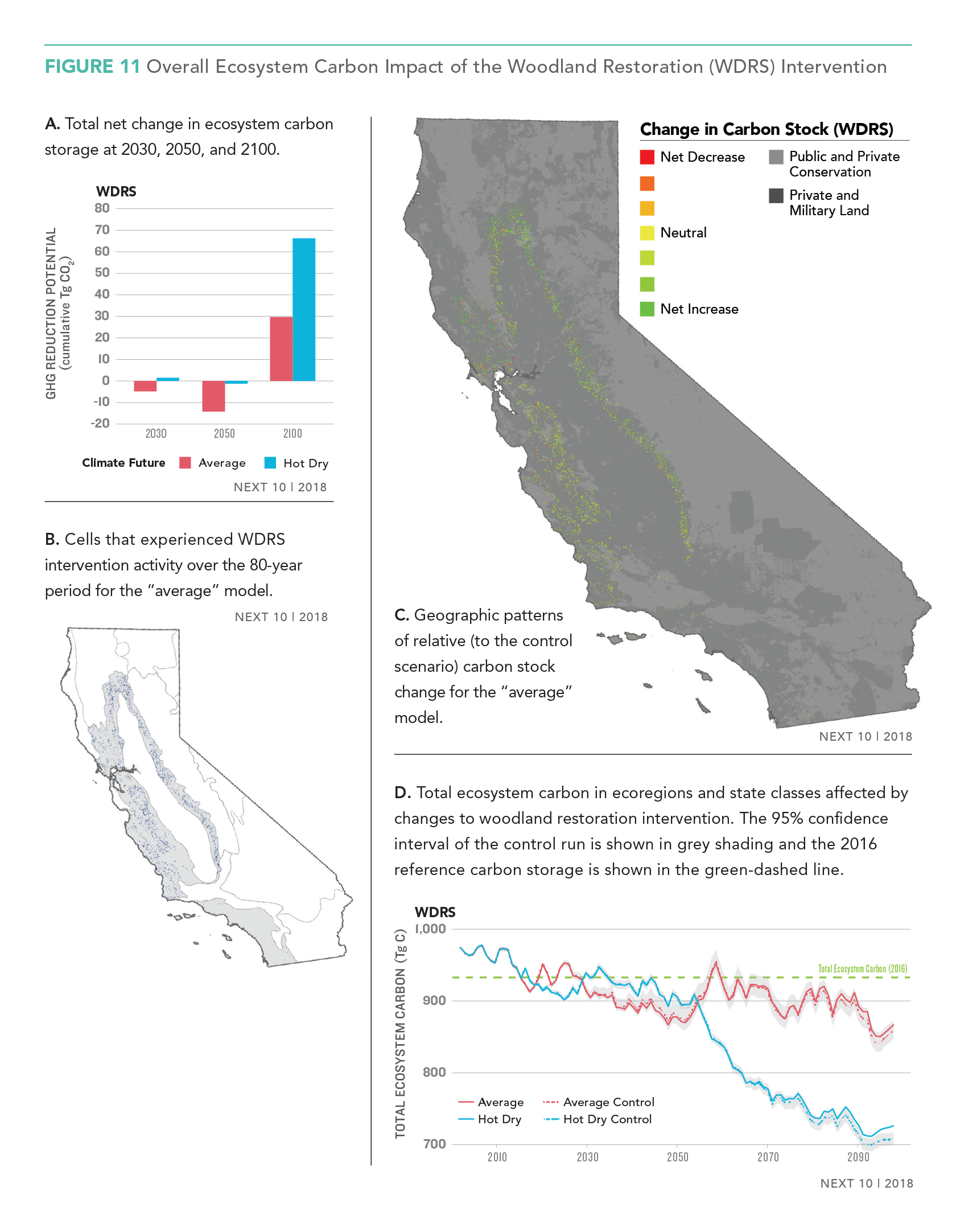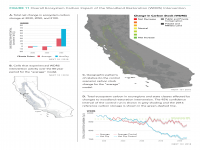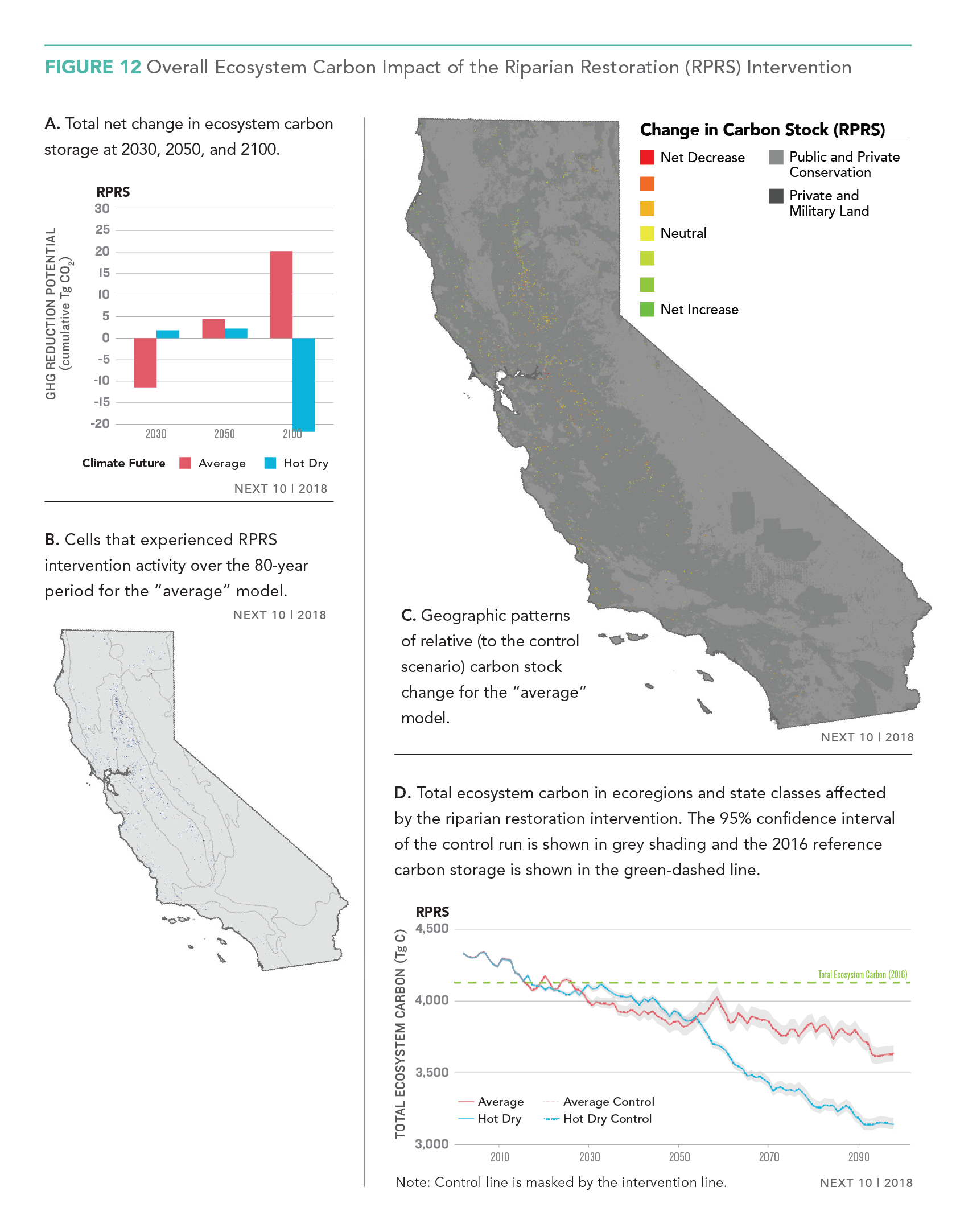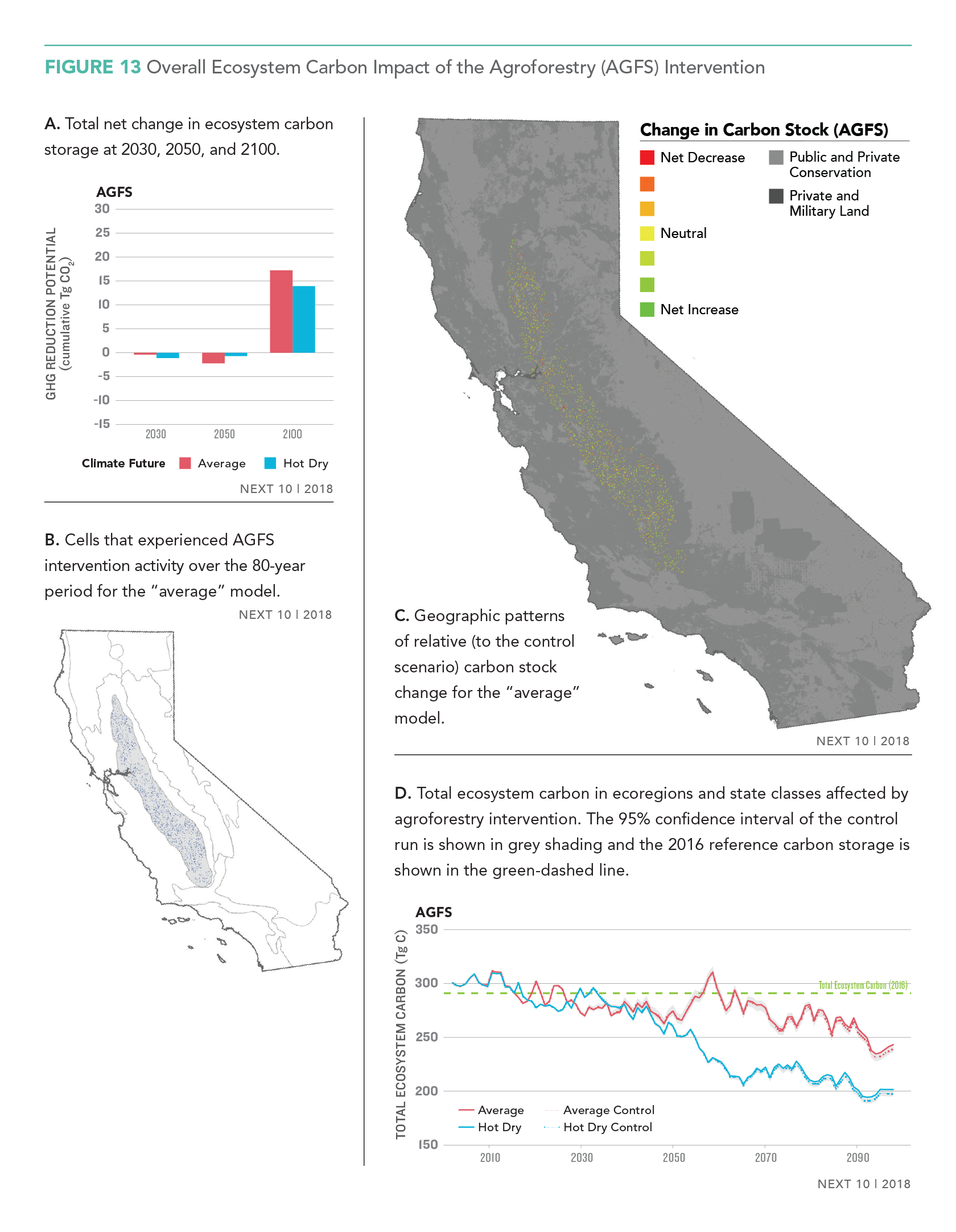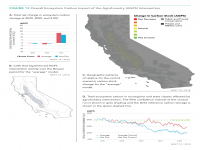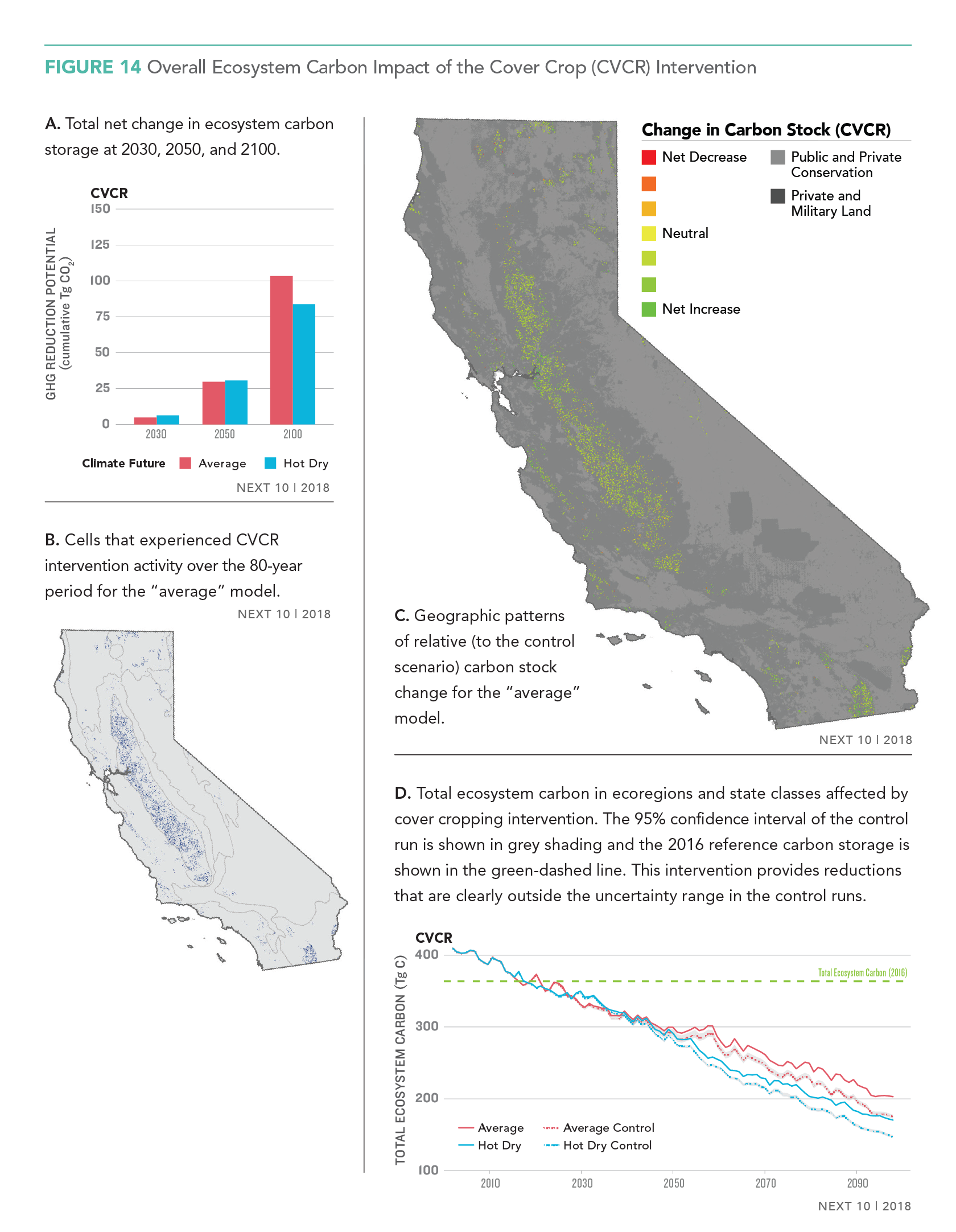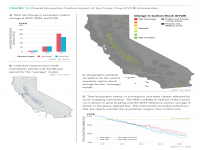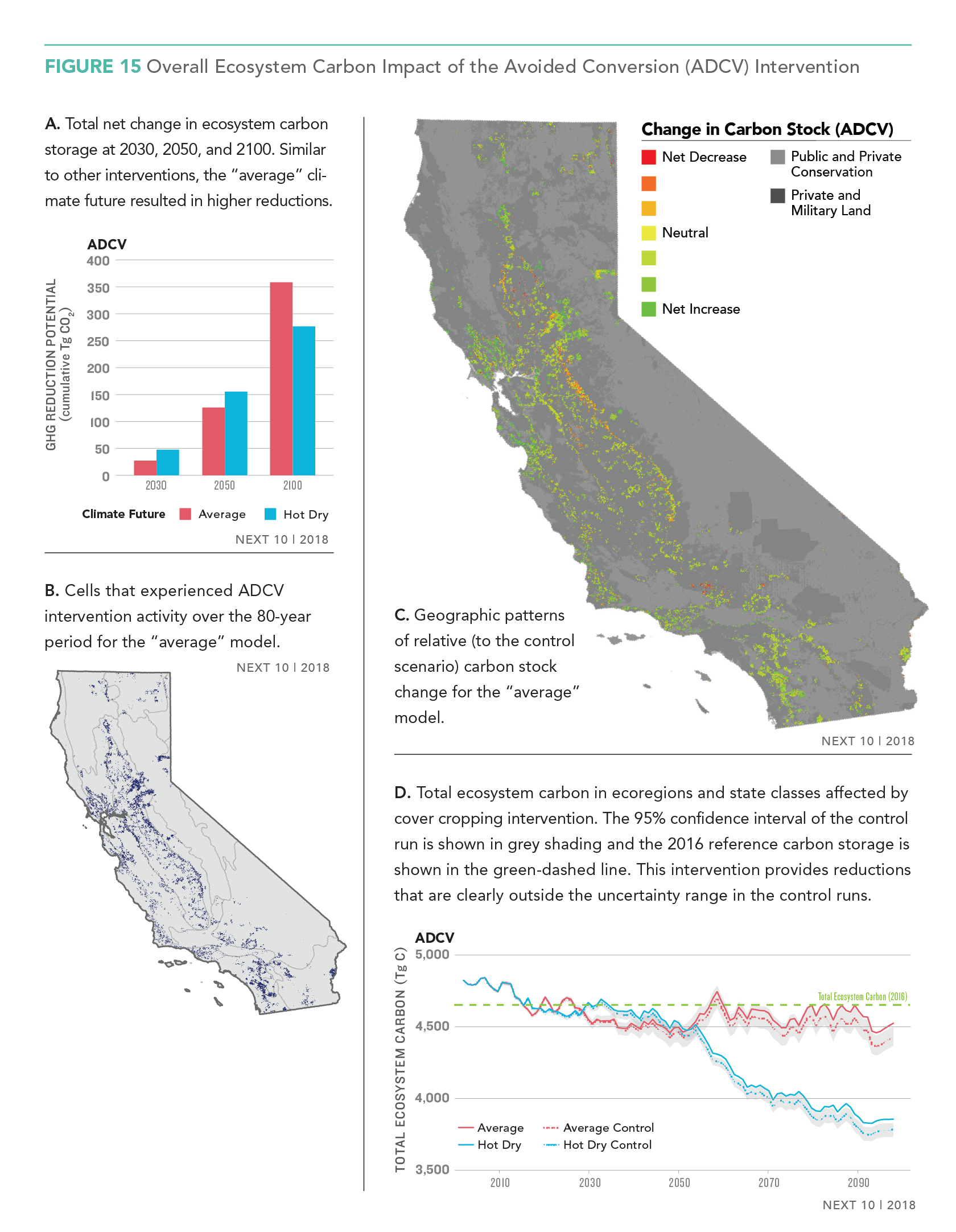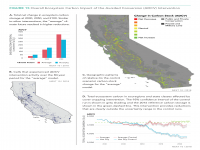Publications
Toward a Carbon Neutral California: Economic and Climate Benefits of Land Use Interventions
Investing in the capacity of California’s lands to store carbon can cut significant emissions and deliver billions in economic value, while reducing the risk of wildfire – but the state must act quickly to avoid these lands becoming a greater source of emissions as climate impacts take hold.
This study found that interventions on natural and working lands (forests, farms and rangelands) can contribute 2.5 times the emissions reductions expected from the residential and commercial sectors combined, and up to 80 percent of the industrial and agricultural emissions reductions expected—both by 2050.
The detailed report models eight potential land use interventions including land conservation, restoration and land management practices under two different climate scenarios to measure their potential to cut emissions out to 2030, 2050 and 2100. While these reflect only a subset of land management practices that can reduce emissions, it was found that these strategies can collectively achieve emissions reductions, despite a decline in the ability of the land to store carbon over the course of the century due to the impacts of climate change.
Next 10 is not the sole owner of rights to this publication. Usage of this content is subject to permissions, please contact us at info@next10.org for more information.
- Land use interventions are the only current proven, scalable method to create negative greenhouse gas emissions—something that will be needed for the state to become carbon neutral – and then carbon negative—from 2045 onwards.
- Despite naturally declining carbon stocks under both the “average” and “hot-dry” climate futures modeled, the interventions can collectively cut over 260 million metric tons of carbon dioxide (CO2) by 2050.
- Among the modeled activities, the largest reductions in net emissions came from avoided conversion on natural and agricultural land, followed by changes to forest management on private timberland.
- This represents five percent of the emissions reductions the state needs to meet its 2050 climate goal. This percentage is even higher (7%) when removing the strategies that reduce the severity of wildfires, which drive up overall emissions in the short term, but provide significant reductions by 2100. Without these strategies, land use interventions can help the state achieve up to 14 percent of the reductions needed by 2030.
- Even when including the wildfire severity reduction interventions, natural and working lands can contribute reductions that are 2.5 times greater than those expected from the residential and commercial sectors combined, and 80 percent of both the industrial and agricultural emissions reductions modeled to meet the state’s 2050 targets.
- Even with the limited scope of economic analysis included in this study, the economic benefits of land-use strategies are significant.
- The modeled strategies produced between $14.9 to $17.2 billion in economic value by 2050 when accounting for the benefits of not emitting CO2 or nitrogen-based greenhouse gases or pollutants, as well as avoided costs of damages from flooding and fire suppression.
- The costs of these programs range from $32.6 to $35 billion from 2020 to 2050, respectively, including direct costs of program implementation as well as the opportunity costs of the foregone increase in land value in urban, managed forest, or agricultural land through 2050.
- For every dollar spent on implementing land-use strategies, close to fifty cents will be recouped in economic benefits—and that's without accounting for other positive impacts, like the public health or recreational benefits of maintaining natural land near cities, or the benefits of more compact growth patterns, such as shorter commutes.
- The interventions modeled in the study provide co-benefits such as improved air quality, water quality and ecosystem resilience to climate change.
- These benefits were not translated into economic value, but many of the strategies modeled can help enhance quality of life across California, including protecting lives and property in the event of wildfires.
- Wildfire risk adds variability to the results.
- The study modeled a strategy to reduce the carbon dioxide emissions of wildfire by thinning forests and conducting prescribed burning projects to reduce the overall areas burned in "high severity" fire events by over 1.5 million acres by the end of the century.
- This was modeled under two different fire scenarios, one in which 10 percent of land burned by wildfires is considered "high severity"—which is in line with historical measures of California wildfires—and a 30 percent high severity-scenario, which is more representative of what has been seen in recent wildfires, in which up to 30 percent of areas burned by wildfires have high tree mortality.
- While both strategies to reduce wildfire severity produce increased emissions by 2050 due to the carbon dioxide emitted through prescribed burning and forest thinning, by the end of the century, these strategies could provide a net reduction in emissions by as much as 181 million metric tons of CO2 and reduce the cost of fighting fires by up to $240 million, depending on the climate future modeled.
Next 10 cannot grant permission to use graphics from this publication; additional permissions may be required from the copyright holder. Please view our Terms of Use policy for more information or contact Next 10 at info@next10.org with any questions.

